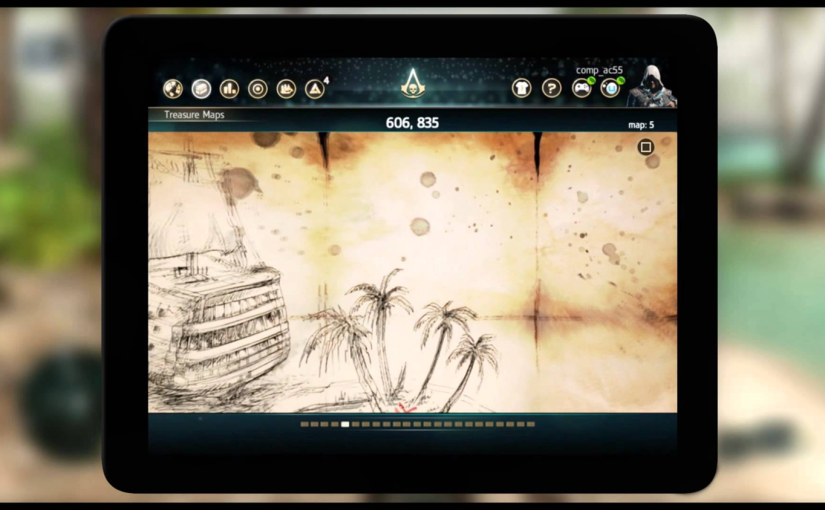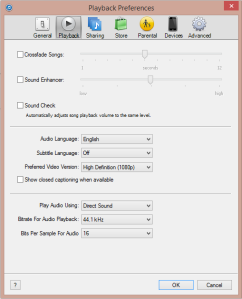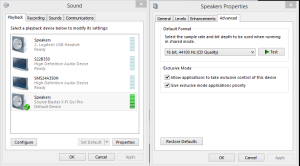What I learnt from your photos…
So lets get this straight first, I haven’t seen or looked for any pictures of any celebrities since the current cloud scandal hit, but like everyone else, it was impossible not to hear the news.
Now we could spend all the time in the world discussing the merits of the different options for cloud storage, but the bigger challenge is getting people to understand the value of content.
Pictures are a great way to capture memories, fun, impactful… even intimate, and the devices we use to capture them have meant we can do so immediately sometimes too easily. With that in mind, these devices have increasingly provided us the ability to capture business information, photos of whiteboards, architecture, and now even moving beyond pictures to files such as word or excel documents, many of which contain information which is both sensitive or competitive in nature.
All of this information has an inherent business value, and its important that we address this. I see this playing out in two ways.
- Educating users on the value of information
- Providing an easy to use yet secure environment to collaborate
Educating users on the value of information
This is probably the toughest area to address in this space. Helping users understand the value of content they have created is a challenge, you cant simply charge by the letter, word, or cell in a spreadsheet. So how do you quantify the value of a document, well unless you are talking about a document that contains a quantifiable value to the company i.e. a business plan for an incremental $10 million revenue, or product marketing plan to generate $50 million in pipeline opportunity, we need to think about the qualitative. Users need to think about what is the risk if a competitor got this information, what is the impact if this information got leaked to the press. There is no simple way to add a $ to all of this, the only thing that can be done is to drive awareness and education on the problem, unless there is some type of business intelligence way that could evaluate the dollar value of content.
Providing and easy to use yet secure environment to collaborate
Companies can and must take an active role in providing safe and secure environments to collaborate, that integrate in to the users natural work motion, especially as that work motion has changed so rapidly since the consumerization of IT. There are plenty of solutions out there in the marketplace, at VMware we have some amazing technologies from our Air-Watch team with the Secure Content Locker offering (http://www.air-watch.com/solutions/mobile-content-management).
It is essential that information be treated with a level of security that is inline with its sensitivity. In that regard we need to start thinking about content lifecycles, expiration, tracking, encryption… all of these sound incredibly complicated, but increasingly necessary, but at the same time, it needs to be done in a way that is intuitive to the user. IT can try and roll their own solution in this space, but with the increasingly complex environment of devices and content, its easy to get out of touch with all the demands, as well as just running your current IT services.
The thing is, its not a matter of if we should implement this, its a matter of when, and later is not an option, as massive amounts of content is being created every minute, as was shown in the infographic here http://mashable.com/2012/06/22/data-created-every-minute/.
In closing, IT departments need to be thinking about ways to help solve the problem of information leakage, after all its not just the value of the information you know about, but the unknown value of the information you aren’t aware of.
Make a decision already…
OK, so I am on a flight between Singapore to Dubai for a marketing summit for work on Singapore Airlines, and am lucky enough to be travelling business class (I should state that I am in business class because a self-upgrade using the points accumulated through the travel I do). I was steadily working away on some reports, when they started doing the meal service, which was amazing, and decided to watch one of the in-flight movies. What I chose to watch was “The Secret Life of Walter Mitty”, starring Ben Stiller and Kristen Wiig (and I have to say this lady is going through an amazing transformation herself with her recent roles!).
I can honestly say this movie moved me in a way that not many movies have in the past, well except Conan the Barbarian, the original one (that one’s for you James Raybould). We see many films about personal transformation and how people have grown but there was something about this film which took us through a journey of change, spurred on by a situation at work to step up and solve a problem, the result of which was not just the solving of the problem, but the personal transformation that resulted from it.
The film took us through a multitude of crossroads, where the protagonist could have gone with the safe option, and gone with flow, but if he had, it would have resulted in a worse personal situation. Each option pushed him further and further outside his comfort zone, but pushed him further and further in to a more confident and accomplished individual, which to be honest was inspiring to watch.
So you will say… it’s a movie Matt, and yes I take that on board, but the elements of choice in making tough decisions is something that we face on an almost daily basis, we may not have a situation like in the movies where cutting the green wire or the red wire means the sake of a planet, but a single choice can determine the future of a person, a group, or even a company. Think about a time when you were a part of something, and the direction of that something may not have felt right, or seemed contrary to the values of what you do.
One of the values of LinkedIn, where I work, is to “Act Like An Owner”, that seems straight forward enough, but sometimes it also means having to make decisions that are contrary to the popular opinion, it sometimes means making a decision which will upset someone, sometimes it’s a decision that makes you unpopular. I guess with age, and experience making some of those decisions, or expressing some of those critical concerns becomes easier, and the more used to making those decisions, the easier it becomes.
I was once asked by a manager, who pushed me hard daily, and pretty much influenced the way I am today, Haresh Khoobchandani, “Do you want to be a manager who is liked, or a manager who is respected?”. Respect comes from making the tough choices that are right for the business, right for the customer, right for whatever cause you work for, they may not be popular, but they are right. Make choices, make them based on what you believe, you are in a position because you are trusted to make them.
And by the way, “The Secret Life of Walter Mitty” is a pretty good film.
Innovation in Consumer Marketing at Sony with DraftFCB
Hats off to Sony and the team at DraftFCB for this amazing piece of marketing you can see in the video below.
This is the amazing sort of marketing innovation which draws eyes and product recognition.
There are two things that really make this work
- The placement of the product is being put right in front of the consumers that are more than likely going to purchase it, in a location where many of their consumers actually interact to buy drinks.
- Packaged in a very innovative manner that not only draws the eyes and piques the interest of the consumer, but also demonstrates the prime functionality and differentiator of what this gadget can do over others.
You might look at this and say, “This is amazing, but it must have cost a fortune, and only a company like Sony could do this!”, and yes I would agree, but innovation and eye catching marketing need not be expensive, it just needs to be creative and purposeful.
I harken back to the experience I had in my marketing days in Microsoft, when we were heading in to the launch of Windows 7. Even for a large organization such as that one, you still had to be frugal about your marketing expenses, and you always look for the biggest bang for buck. We did advertising and your standard things, which cost a lot of money, but it was the “scrappy” things we did that got the recall we were looking for.
There were two things we did, which when I look back, its with fond memories…
Fast Windows, Fast Cars
This was a fairly simple thing we did to align with the research we had done with our user audience, and trying to understand what was more important to our customers in our region of Singapore. While worldwide the message around Windows 7 was on simplicity, we understood that the majority of the Singapore audience saw value in the speed of the operating system even more.
As a fun way to drive recognition and drive connection between speed and Windows 7, we created some large magnets branded Windows 7 with an associated fast message, and asked some of our luckier colleagues with a passion for performance vehicles to take a drive around some of the more busier areas in a cavalcade type parade. They didn’t speed, or do anything stupid either, and this wasn’t 100s of cars, it was about 10 or so, but the imagery was priceless, and it picked up some great press. For us that was better publicity than any advertising could buy.
Taking it to the streets
The other thing we did, was instead of trying to get customers in to showrooms and IT stores to see Windows 7, we decided to take Windows 7 to the masses. In order to this we worked with a number of our awesome OEM partners at that time to loan us some of their launch machines around Windows 7 and we had some t-shirts made for staff, and sent them out on to Orchard Road in Singapore (this is probably the busiest consumer location in Singapore) to demonstrate Windows 7 live.
This gave us a great opportunity to show people Windows 7 in action to people on the go, we got to wow them with the features, and then asked them to take a picture with the laptop and a Windows 7 sign. It was immense fun, and got a lot of interest.
The Important of Staff Participation in Marketing
The big lesson I got from these types of activities is that the execution of these sorts of “scrappy” campaigns, is that your colleagues love to participate. As marketers we seem a little too close to the coal face in terms of execution and sometimes forget that some of the things we do are actually fun, and people want to support it. So if you can come up with activities that can use additional hands you sometimes don’t need to look further than your own company, they will be happy for the opportunity.
Marketing is fun, innovative and invites the opportunity to take risks, sometimes it doesn’t always pay off, but you learn, refine and get better at it. Then sometimes, you hit the mark, like Sony.
[Problem Solved] Audio Sync issue in WIndows 8.1 with iTunes movies and Hulu
One of the biggest things which has been a constant annoyance for me with a HTPC of late has been the gradual drift of audio getting out of sync with video. The problem always seemed to be inconsistent and I could never narrow it down to one particular thing.
Well tonight it seems like I may have had a breakthrough, and it looks like the culprit was the Realtek HD Audio Manager. It was suggested that you should disable this service starting up when Windows starts, to see if that resolved the problem.
To do this you want to;
1. Go in to the desktop mode
2. Right-click on the taskbar and bring up the Task Manager
3. Go to Startup Tab
4. Look for the Realtek HD Audio service, right click the service and select Disable.
5. Restart the PC
I didn’t think my computer was even using Realtek for the audio as it was running through the ATI card on HDMI, but it was there and it was running. I disabled the service, and then restarted the machine, and everything looked great, and still sounded the same. I subsequently tested multiple video/audio sources including iTunes and Hulu and the sync problem seemed to be solved. I was also previously running the monitor at a refresh rate of 24 Hz as that seemed to have the least issue, but as everything was working ok, I pumped it back to the preferred 60 Hz, and lo and behold the audio and video still remained in sync.
I am going to monitor it for the next couple of days, but for now all seems to be running great… happy days for this HTPC owner.
So if you are running a HTPC with Windows 8.1 and happen to have the Realtek HD Audio Manager running as a start up service, try disabling it and see if that has a positive effect on your setup.
Second screen experiences gaining traction – ideas for Marketing?
I recently received from my wife and children a Sony Playstation 4 for Christmas, well I think the honest truth of it was, I bought it and then everyone claimed it was my Christmas gift, who am I to argue?
Anyway, one of the things that really shone through as I started using and playing, was the idea of how much the “Second Screen” experience had penetrated every element of the primary experience itself. Using this new extended experience, really made me think about how this could translate in to the business sense for B2B and/or B2C marketing disciplines.
The trick here is that the Second Screen experience keeps you engaged with the primary experience, even when you cant be using it, and when you use the secondary experience, it actually impacts what your situation is in the primary experience. Sounds complicated right? Well let me give you the scenario that did it for me.
Assassins Creed 4 from UbiSoft (http://assassinscreed.ubi.com/en-US/home/index.aspx), is a fantastic game full of pirates, action, adventure and intrigue, and great story to boot… but that’s not what we are here to talk about, this ain’t a game review site. What the game actually added to the experience was a companion app that could be run on the iPad or Android devices (An example is the iOS version at https://itunes.apple.com/us/app/assassins-creed-iv-black-flag/id692766233?mt=8).
This companion app lets you manage the captured ships in your fleet, send them in to battle, send them on trade routes and essentially earn money, upgrades etc. These items and cash, and the status you left your ships in, would be translated in to the game itself.
The trick with this is that it kept you constantly engaged, when you had some downtime you could always just check on the ships, make sure they are up to scratch and send them off on the next mission, and all that took a matter of seconds. The key is continual engagement, delivered in a way that you want to engage. While that is the key, the trick is the last point, “… in a way that you want to engage.”.
Now if we think about the way we engage in marketing today, we typically engage customers in a series of one off engagements, that feel just like that to the customer, a one off engagement that has little meaning in the scheme of things. What is the interest for a customer to take action on some sort of email marketing campaign, or website? Sure you might have some sort of offer that might encourage a course of action, like a discount or special offer, but its still a one time engagement.
Let’s attempt to drive the comparison here between marketing and the video games. The events or campaigns that we run are the video game on the TV, and the time in between is basically the missing component unmatched by the Second Screen experience for the game on the tablet or phone.
So maybe that’s whats missing? What are the things that marketing can encourage its customers to do between events/engagements, that would influence the next engagement, ensuring that the next experience is a better one.
Maybe what we need is someway to demonstrate the continual engagement we have had with the customer, how its benefiting them, what they can do in between, and by doing so, set an expectation on what the next engagement should be like, ensuring that the customer feels like they are in control.
That I think is key…
Geek Out Passion – The Home Theatre PC
One of my home passions (which irks my darling wife to no end), is tinkering around with the whole concept of running a Home Theatre PC or HTPC as they are known. I have been doing this since the Windows XP days, and while I cant say I am an expert in setting it up, each different OS or component adds new challenges. When it is set up, I absolutely love it, as does the family.
My only problem is that each time I do a new setup, I never document what I did, and then spend forever trying to fix it. So now I am going to try and document my setup and address some of the technology challenges I have been having, so the next time, I can come back and get the answers I need faster.
Current Setup at Home
HARDWARE
The Display: LG 55-inch 4K TV
(http://www.lg.com/us/tvs/lg-55LA9700-led-tv)
Yeah I am an early adopter here, but my last TV just died, and it actually lasted us about 5 years, so if I have to wait that long to get another TV I might as well get the latest. The other point I could have gone bigger, but the living room really isn’t that big so I didn’t want to be too crazy about it.
The other nice thing about this TV is the slide out sound bar at the base, because of this I have removed my amplifier and 5.1 surround setup, again you might wonder why ditch the amp, but again the issue came down to my room really not being a precision room for optimal sound, so clarity and simplicity overruled here.
The HTPC: A Sony Vaio Z
(http://www.sony.com.sg/product/vpcz217gg/sku/vpcz217gg_x+e1)
Its almost sad to see that this machine has been discontinued, its been my work horse PC for three years, and is still a kick ass system, it has an Intel Core i7, 256 GB of SSD, and a separate attachment for running a Blu-Ray drive that also has a secondary video card from AMD on it, it can certainly pump out the performance. So until I really need to get a new PC to replace this one as a HTPC, I think I’m going to stick with it.
SOFTWARE
The Operating System: Windows 8.1
(http://windows.microsoft.com/en-US/windows-8/meet)
I know there are a lot of haters out there, but for my money, Windows 8.1 has the right layout for a large screen TV with Tiles, and the ability to run all the applications I need are of paramount importance, also important is familiarity for my wife, the kids are still too young to use it, but having consistent operating systems from the study to the living room just makes everything that much simpler.
For Movies and TV Series: Apple iTunes
(http://www.apple.com/itunes/)
Because there are no other movie services anywhere else in our region, Apple delivers the best option, especially with the fact that we have Apple TV and a number of iPads in the house. What this means is that we can have our movies on the smallest screen to the largest screen in the house all running at 1080P. Couple that with the Fiber Optic internet, we don’t even have to download, we can stream directly on the HTPC with no problem at high def.
For Music: Spotify
I just think Spotify is one of the best services out there for music today, I run it on my work PC, my Phone (and also connected via Bluetooth in the car) and on the big screen TV. Their entire library doesn’t seem to disappoint, and just keeps getting better. The problem is that they haven’t really come up with anything good for the new layout in Windows 8.1, however an application has just been released to deliver such an experience for paid users of Spotify called Spotlite (http://spotifywindows.herokuapp.com/desc), its definitely a must have app which runs great on Windows 8.1, and looks great on a monitor of any size!
THE PROBLEMS AND THEIR SOLUTIONS
Getting the best resolution to reduce judder etc…
So with any big screen TV you want to push it to its maximum to get the best out of it, and in my case with the LG 4K TV, the native resolution is up to 3840 x 2160. Now while the Sony Vaio Z can output this much resolution, and looks great on the desktop, any sort of movie playing struggles when you get to the panning scenes, such as the opening scenes in movies like “The Hobbit”, I found dropping the resolution back to 1920 X 1080 helped to eliminate some of the judder that I was experiencing, but there was still some there.
The second area I looked at was the Screen Refresh rate, by default it sets it to the highest supported for the resolution I was using, which for 1920 x 1080 was around 60 Hertz, by dropping this back to 24 Hertz, I eliminated a lot of the judder, and for some reason it unlocked some of the TruCinema features of the LG TV, which when turned on, just made those scenes look amazing.
I am hoping that with the next PC, I am going to make sure I get a pretty hefty video card, with HDMI 2.0 output when it becomes more common, to help with the bandwidth required to run all apps and content at the 4K levels, of course this still relies on LG ensuring that there is an update to the TV HDMI ports to HDMI 2.0, come on LG, don’t let us down here!
Lip Sync Issues
Man I can honestly say, this one bugged me the most out of all the problems, and was an issue between Apple’s iTunes and Windows 8.1, I just couldn’t get the screen to sync with the sound. The LG tv has an audio sync feature, but by changing that, it alters the experience on other inputs like cable and the Xbox. After much researching, I learnt that it had to do with ensuring the playback settings for audio were set the same on iTunes as they were in Windows.
The settings I speak of are in the Preferences in the main menu, where you navigate to a tab called Playback, that looks like this;
You want to make sure you take note of the settings
- Bitrate for Audio Playback
- Bits Per Sample For Audio
These are the two things that need to match with your Windows Settings, which can be found under your Playback settings for audio. That one looks like this;
I have put the two screens side by side here, you chose your audio device and then go in to the properties, and from there to Advanced.
In the default format, you need to make sure the selection here matches the settings that are in iTunes. If you make a change to iTunes, you will need to change the settings here. Once this is done, give your PC a reboot, and you shouldn’t have anymore lip sync issues, at least with iTunes.
I haven’t seen this having a negative effect on any other applications, but as long as the movies look and sound great, it makes for happy families.
Well that’s it for now, Ill keep adding to this post as I experience more, and maybe update with the new PC configuration when I get round to setting it up, or maybe when LG updates the HDMI ports.
Maybe this will help someone and not have to go through all the hoops and research I had to go through…
Thanks…
Matthew Hardman!
Parting is such sweet sorrow…
Its almost a cliche thing to say, but it is with truly mixed emotions that I announce I am moving from VMware to LinkedIn in this month to take on the role as the Senior Product Manager for LinkedIn’s Talent Solutions in Asia Pacific.
I have had an amazing 2 years at VMware, and have been honored to have partaken in the companies transition from server virtualization to the full Software Defined Datacenter. The highlight though of being a part of this journey was the people I had the pleasure of working with. They made every day an absolute delight to come to work with, and always kept us laughing while maintaining the ultimate professionalism in execution, I will miss you all.
The move to LinkedIn is definitely an exciting one for me, it’s a company I have envied for a long time, and its mission one that I find very compelling, “Connect the world’s professionals to make them more productive and successful”. The opportunity to work with the talent recruitment community is one that is both daunting and exciting, I am sure there is a lot I can learn in this space. Ultimately I am excited about what we can do to help open more opportunities for professionals. The personal development of others has always been a passion of mine, helping people overcome challenges and building skills in their professional careers. To be able to do this one such a grand scale will be amazing…
I am looking forward to sharing with you all the adventures I have in moving in to this great new opportunity.
You Are Only Worth As Much As Your Social Network
I was at dinner this evening with some friends, and we were talking about the experiences each of us have in our work. Now most of the friends were all ex-colleagues of mine, we all used to work at Microsoft in Singapore, and we all had first hand experience on what each other’s role was (We have all moved on to other companies since then), so it was interesting to listen one persons explanation about the types of people that they have in their company and how they work.
One of the roles in particular was on the concept of the “Relationship Manager”, and how their value could be increased by the network that they bring to them in the world of investments. This got me thinking about the whole concept of relationship management and how it related to someone in product marketing.
Typically in most organizations, or at least the ones I have worked in, the majority of the customer relationships were maintained in large Customer Relationship Management (CRM) systems, and when you ran events, lists of potential target accounts were generated and used for invitations and campaigns etc. This typically meant that Product Marketing would engage another department to get this list and work with that department to communicate the particular campaign. Assuming that your campaign generated the desired pipeline for your company, things were great. However, when you left that company, the names and contact details stayed in the system, which is the right thing to happen, those details are owned by the company itself.
With the advent of Social Media, the whole concept of a company owning all relationship details becomes blurred. Now days, it is the individual that owns and manages their contacts, and they aren’t doing that in an Excel spreadsheet or database, those details are being kept in places like Twitter, Facebook, LinkedIn etc. Companies aren’t at the point where they can control those lists, nor should they in the future in my opinion. While people may have a certain fondness or passion for a product or a service, the true relationship that people have are with other people. This has led to the concept of people being Brand Ambassadors in their companies, and being able to project the image a company wants to have to the shared with the world.
The failing in this is that when we connect the concept of a campaign to social media, there are limited examples where a campaign has truly had long term success in the social media arena. Campaigns typically have a ranging execution lifetime, and in many cases, just aren’t long enough to build the relationship. It’s the equivalent of having a one night stand, it was good at the time, but you probably want to move on after its done.
What we get back to here is that people want to connect with people, they want to engage with a human presence, even when its done on the internet, they want to feel that at the other end of all those wires there is an actual person that understood a connection was made, and there is the future of more engagement personally.
I know I am probably not revealing any great truth you haven’t heard about before in Social Network Marketing 101, but something in it all jumped out at me today, when it came to the true value of someone in Product Marketing. While skills and experience are important, should we also perhaps consider the value that individual has with their own social network when considering them for a role, their network if cared for, could yield immediate results when someone comes on board. I am not saying that a person with a great social network has an army of brainless followers who will follow anything that is posted, but what they do have is an immediate network of people that actively want to engage and are interested in what the said person is doing in their lives.
Do we now need to start considering Social Reach as a key component in certain roles when hiring people, should recruiters consider the number of followers someone has on Twitter, or LinkedIn or Google+ when short-listing candidates. Certainly services like Klout are going in this direction, trying to sum it all up as a Klout score, but is it a trusted tool which people can actively use in the hiring process or just a fun tool to do a vanity check.
I had just finished reading a great book on how individuals can build and maintain valuable networks via Twitter called “The Twitter Effect: How to increase your follower count and gain exposure on Twitter” by Eric Bieller. Its a really great and easy read, but gives amazing insights and guidance on the path to creating networks that are real for people. Eric talked about using services like Klout to measure the impact of one’s network that they were building. If you are interested in building a successful network through Twitter then this is a must read.
At the end of the day, your network goes with you, not with the company you work for, so maintaining your social brand, while beneficial for your current role, could also be the key differentiator in the next.
Crowd-funding: Generating a new level of development transparency.
When my parents bought me my first PC in 1994, it came with a Creative Labs bundle pack which included Syndicate Plus, Ultima VIII: Pagan, Strike Commander and Wing Commander II: Vengeance of the Kilrathi. It was the final two which really captured my imagination, and got me forever entrenched in to PC gaming, thank you Chris Roberts. Fast forward to 2013, and I am excited to see that Chris Roberts is back developing an new game called “Star Citizen” (http://robertsspaceindustries.com/star-citizen/). What makes things interesting is the fact that they are driving a serious crowd-funded investment to get the game development up and running, which by all indications has been incredibly successful. To date the effort has raised over $9.5 million USD (approximately $2.1 million via Kickstarter and another whopping $7.5 million via their own website).
What this means for companies like Cloud Imperium Games, the company which Chris Roberts leads, is a commitment to delivering everything that they have promised to the people committing funds. Now are they legally bound to deliver, it wouldn’t appear so, based on the wording of the commercial terms on the site (http://www.robertsspaceindustries.com/commercial-terms/), and I quote;
“3. For the avoidance of doubt, in consideration of CIG’s good faith efforts to develop, produce, and deliver the Game with the funds raised, you agree that any deposit amounts applied against the Game Cost as described above shall be non-refundable regardless of whether or not CIG is able to complete and deliver the Game. In the unlikely event that CIG is not able to deliver the Game, CIG agrees to post an audited cost accounting on its website to fully explain the use of the deposits for the Game Cost. In consideration of the promises by CIG hereunder, you agree to irrevocably waive any claim for refund of any deposit amount that has been used for the Game Cost in accordance with the above.”
While we hope that Chris Roberts and team do deliver, what is interesting is the level of transparency that the team is committing to during the development process. Even if it’s part of an overall marketing effort to continually generate awareness, it still makes people feel a lot closer to being part of something that is being created, and not just anything, something they feel incredibly passionate about. This is in stark contrast to the approach many other product developments have which is typically “It’s done when it’s done.”. In fact, the development of Star Citizen is actively taking people on the journey of the development process itself, going through every step from storyboards to community engagement (can be seen in more detail http://www.robertsspaceindustries.com/category/comm-link/).
Has this same approach been taken by other crowd-sourcing projects?
Let’s take a look at a poster-child project “The Pebble” (http://www.kickstarter.com/projects/597507018/pebble-e-paper-watch-for-iphone-and-android/posts?page=1). If you take the time to read through the blog, you will notice the same level of transparency. The development team at Pebble had blog on Kickstarter as they went through the process, and one of their blogs made special attention to how communication was delivered to their backers, and what level of transparency would be delivered (the entry can be seen here http://www.kickstarter.com/projects/597507018/pebble-e-paper-watch-for-iphone-and-android/posts/221074).
What about another one? The Ouya (http://www.kickstarter.com/projects/ouya/ouya-a-new-kind-of-video-game-console?ref=most-funded), the development of a games console, trying to penetrate a market which some would say is already tough enough with the likes of Nintendo, Sony and Microsoft. The development process which would be a closely guarded secret to ensure maximum impact when it launches, and yet, the process seemed extremely open, even down to specific hardware components (as posted in the blog here for the controller http://www.ouya.tv/its-all-about-control/#more-970).
So does crowd-funding ultimately make the product development lifecycle better, certainly the open communication process that is committed to backers makes it appear so, especially in terms of feedback through the process. What is clear, is that the consumer has had the opportunity to be more closely involved in the development process, and its the responsibility of every organization that participates in crowd-funding to ensure they commit to what they are doing, to ensure that this new approach, continues and thrives.
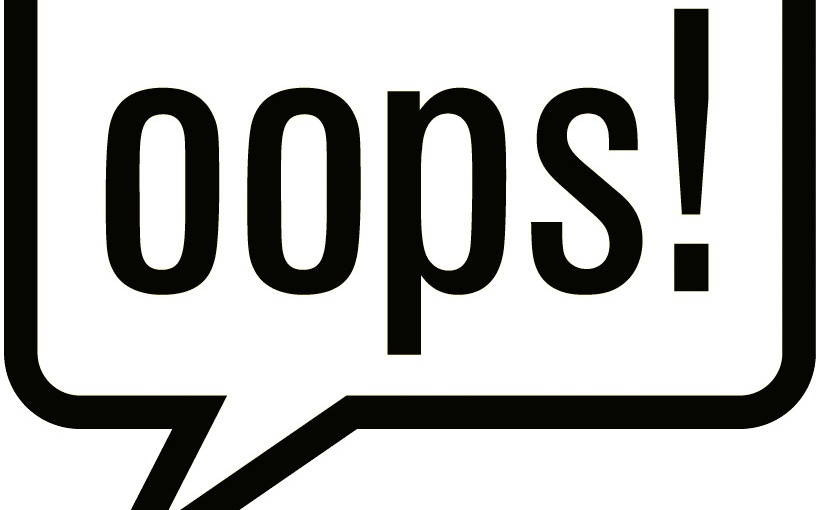
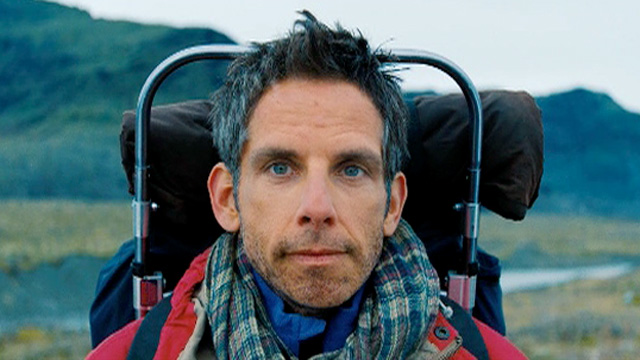
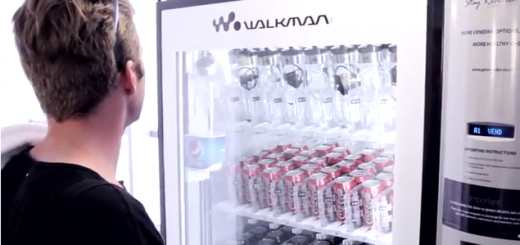
![[Problem Solved] Audio Sync issue in WIndows 8.1 with iTunes movies and Hulu](https://realhardman.files.wordpress.com/2013/12/windows-8.jpg?w=825&h=510&crop=1)
